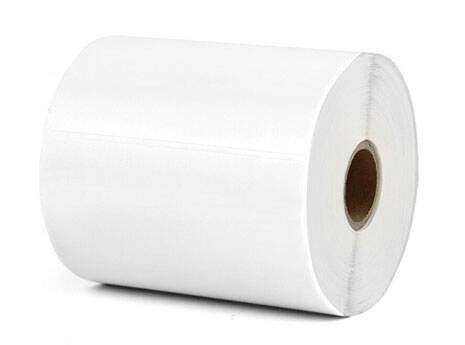Email cannot be empty
Password cannot be empty
Email format error
Email cannot be empty
Email already exists
6-20 characters(letters plus numbers only)
The password is inconsistent
Email format error
Email cannot be empty
Email does not exist
6-20 characters(letters plus numbers only)
The password is inconsistent


Direct Thermal vs. Thermal Transfer Labels: What’s the Difference?
If you're in the market for labels for shipping, inventory, or product identification, you’ve likely come across direct thermal and thermal transfer printing technologies. While both use heat to produce images, they work differently and are suited for different applications.
In this blog, we'll break down the key differences between direct thermal and thermal transfer labels to help you choose the best option for your needs.
How Do Thermal Labels Work?
Both direct thermal and thermal transfer labels rely on heat to create images, but the way they do so differs significantly.
1. Direct Thermal Labels
-
How it works: A thermal print head applies heat directly to a specially coated label, causing a chemical reaction that darkens the surface. No ink, toner, or ribbon is required.
-
Best for: Short-term applications (e.g., shipping labels, receipts, barcodes for temporary use).
-
Pros:
-
Lower upfront costs (no ribbons needed).
-
Simple operation with fewer consumables.
-
Quiet and fast printing.
-
-
Cons:
-
Sensitive to heat, light, and friction (can fade over time).
-
Not ideal for long-term use or harsh environments.
-
2. Thermal Transfer Labels
-
How it works: A thermal print head heats a wax or resin-based ribbon (called a "thermal transfer ribbon"), which then transfers the ink onto the label material.
-
Best for: Long-lasting applications (e.g., product labels, asset tags, durable barcodes).
-
Pros:
-
More durable and resistant to fading, heat, and chemicals.
-
Works with a variety of label materials (paper, polyester, polypropylene).
-
Suitable for high-quality barcodes and detailed graphics.
-
-
Cons:
-
Higher operational cost (requires ribbons).
-
Slightly more complex due to ribbon handling.
-
Key Differences at a Glance
| Feature | Direct Thermal Labels | Thermal Transfer Labels |
|---|---|---|
| Ribbon Required? | No | Yes (wax, wax-resin, or resin) |
| Durability | Short-term (6-12 months) | Long-term (years) |
| Cost | Lower initial cost | Higher due to ribbons |
| Print Quality | Good for basic barcodes/text | High-quality, smudge-resistant |
| Environmental Resistance | Sensitive to heat/light | Resistant to heat, chemicals, and abrasion |
| Common Uses | Shipping labels, receipts, short-term barcodes | Product labels, asset tracking, industrial tags |
Which One Should You Choose?
Choose Direct Thermal If…
✔ You need low-cost, short-term labels (e.g., shipping, receipts).
✔ You want a simple, ribbon-free printing process.
✔ Your labels won’t be exposed to heat, sunlight, or abrasion.
Choose Thermal Transfer If…
✔ You need long-lasting, durable labels (e.g., product barcodes, warehouse tags).
✔ Your labels will face harsh conditions (heat, chemicals, outdoor use).
✔ You require high-quality, smudge-proof prints.
Final Thoughts
Both direct thermal and thermal transfer labels have their strengths, and the right choice depends on your specific needs. If you prioritize cost and simplicity, direct thermal is a great option. But if you need durability and longevity, thermal transfer is the way to go.
Need help deciding? Let us know your application, and we’ll guide you to the best label solution!
Have questions? Contact us!

